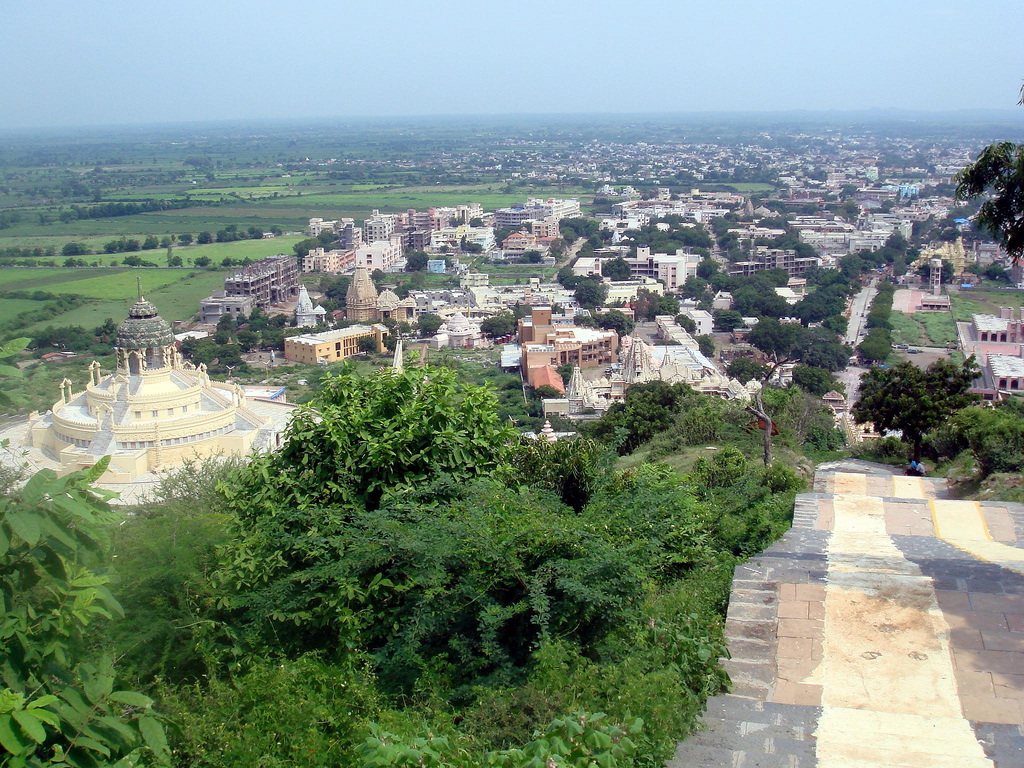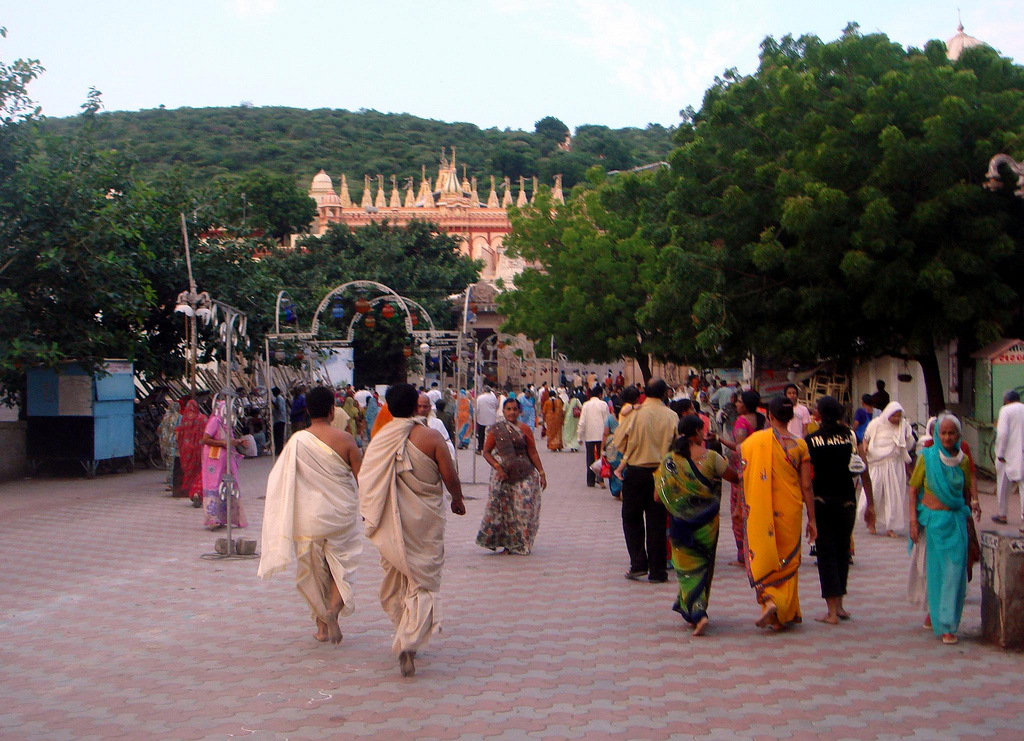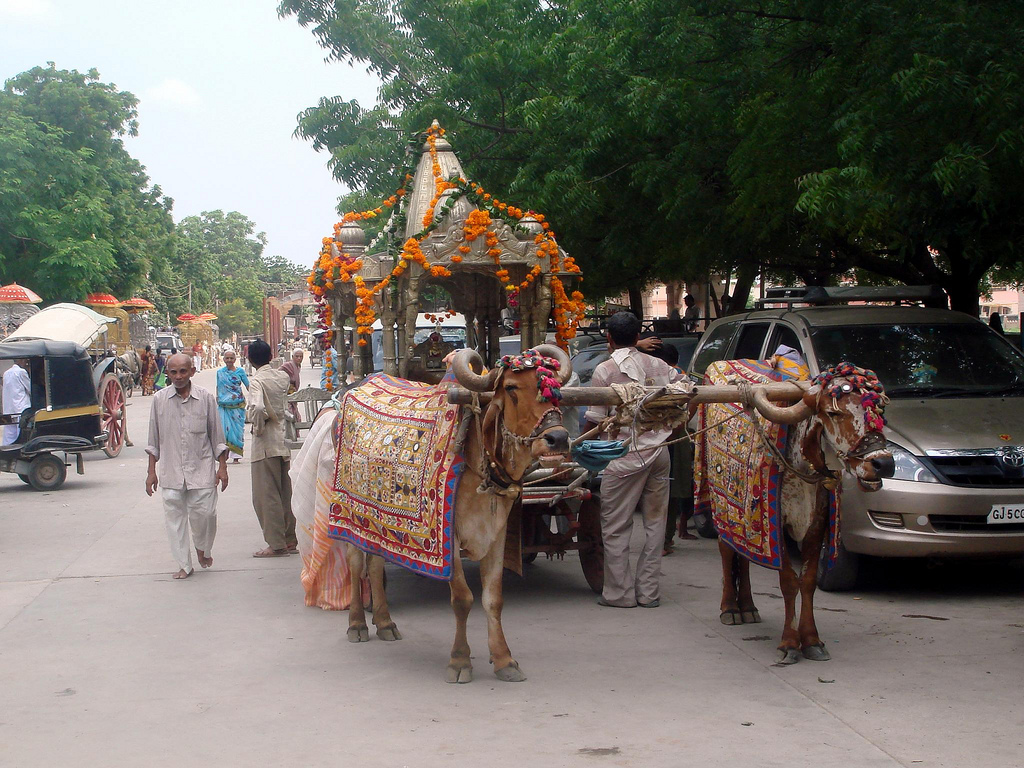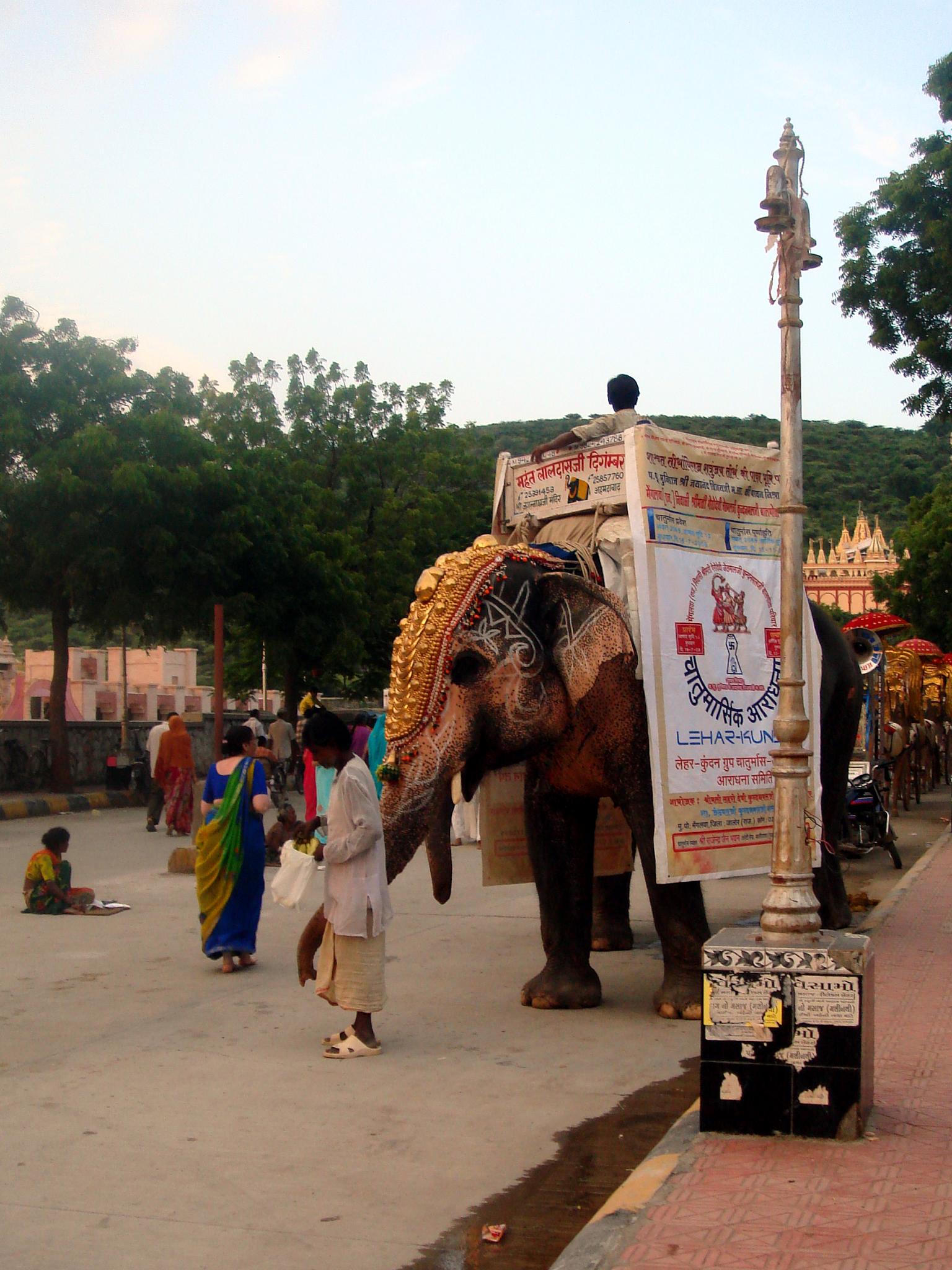Jain Temples of Mt. Shatrunjaya
The Shatrunjaya Mahatirth, Palitana temples are considered the most sacred pilgrimage place (tirtha) by the Jain community. There are more than 1300 temples and shrines located on the Shatrunjaya hills, exquisitely carved in marble. The main temple on top of the hill is dedicated to first tirthankar Lord Adinath (Rishabdev).
According to Jain scriptures Shatrunjaya Mahatirth is believed to be an eternal shrine. In ancient times the place was known as Pundarikgiri; there are 108 names of this shrine in scriptures. Countless times the tirth has been renovated and during the present “Avasarpini” part of the cycle of time (time runs in cycles having two halves, one in which there is general ascendance and the other in which there is general descendance, former being termed as “Utsarpini” and the latter “Avasarpini”) there have been such resuscitations.
Renovation at the instance of: 1. Bharat Chakravarthy, son of Sri Adishvar Bhagwan. 2. King Sri Dandvirya III. 3. Sri Ishanendra during the period between the 1st and 2nd Tirtankaras of the present set of 24. 4. Sri Mahendra Indra 5. Indra of the 5th dev-lok. 6. Sri Chamarendra. 7. Sri Sagar Chakravarthy during the period of Sri Ajithnath Bhagwan. 8. Sri Vyantarendra during the period of Sri Abhinandan Bhagwan. 9. King Sri Chandrayasha during the period of Sri Chandraprabh Bhagwan. 10. Sri Chakrayuddha, son of Sri Shanthinath Bhagwan. 11. Sri Ramchandraji, during the period of Sri Munisuvrat Bhagwan. 12. Pandavas, during the period of Sri Neminath Bhagwan. 13. Sri Javadshah, a resident of Mahuva in Vikram year 108. 14. Minister Bahad, during the period of Raja Sri Kumarpal in Vikram year 1213. 15. Sri Samarashah in Vikram year 1371. 16. Sri Karamashah, a resident of Chittod on the auspicious 6th day of the dark half of the month of Vaishakh in Vikram year 1587. Besides above, they have been carried out by Raja Samprati, Raja Vikramaditya, Raja Am, Sri Tejpal soni of Khambhat and Sri Anandji Kalyanji Pedhi founded by Sri Swetamber Jain Sangh as and when found necessary.
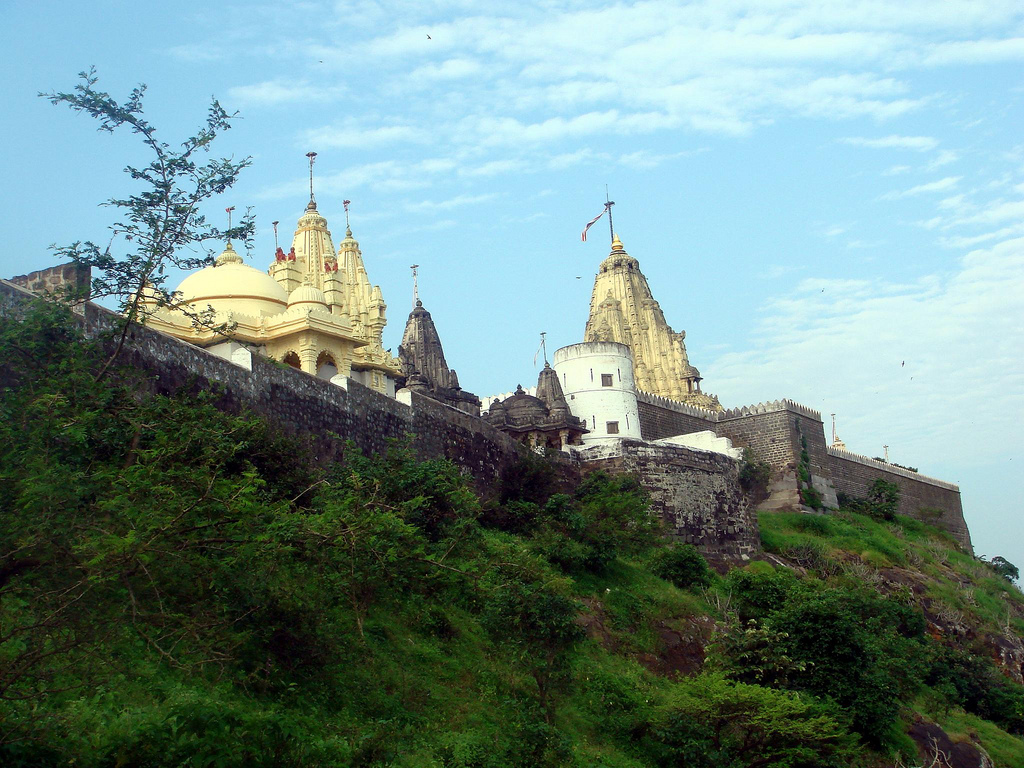
According to Jain scriptures, countless souls have attained their Moksha here, e.g.,
- on Chaitra Poornima: Sri Pundarikswami (first Ganadhar of Sri Adishvar Bhagwan),
- on Kartik Poornima: Sri Dravid and Sri Varikhil with their numberless saint disciples,
- on Falgun Sukla 13: Sri Samb and Sri Pradyumna (sons of Sri Krishna Vasudev a Tirthankar in future-to-be),
- on one of the peaks known as “Sadabhadra” of Mount Shatrunjaya which later became famous as “Bhadvano Doongar” together with their numerous saint disciples.
In commemoration of this event, a circulatory pilgrimage for 6 “Kos” (19.3 Kms) is being undertaken by devout pilgrims and a big fair is also being held. Besides above, Sri Suryayasha, Sri Nami, Sri Vinami, Sri Naradji, and various successors of Sri Adinath Bhagwan beginning with king Sri Adityayasha up to Sri Sagar Vhakravarthy.
Sri Shelaksuri, Sri Shuk Parivrajak, Five Pandavas etc., together with many other saints attained their Moksha here. Sri Adishvar Bhagwan visited this place a number of times. All Tirthankaras except Bhagwan Neminath have added to the glory of this shrine by personally paying a visit to it on a pilgrimage. The guardian deity of this shrine is Kapradi Yaksh for invocation of whom, it is said, and Sri Krishna had practiced intense austerities here in one of the caves. Bhagwan Adishvar climbed 99 times up to the shrine on the top of this Siddhachal Giriraj and in commemoration of that holy performance pilgrims come here from all corners of India to repeat the same on their part and to spend the entire four month period of the rainy season.
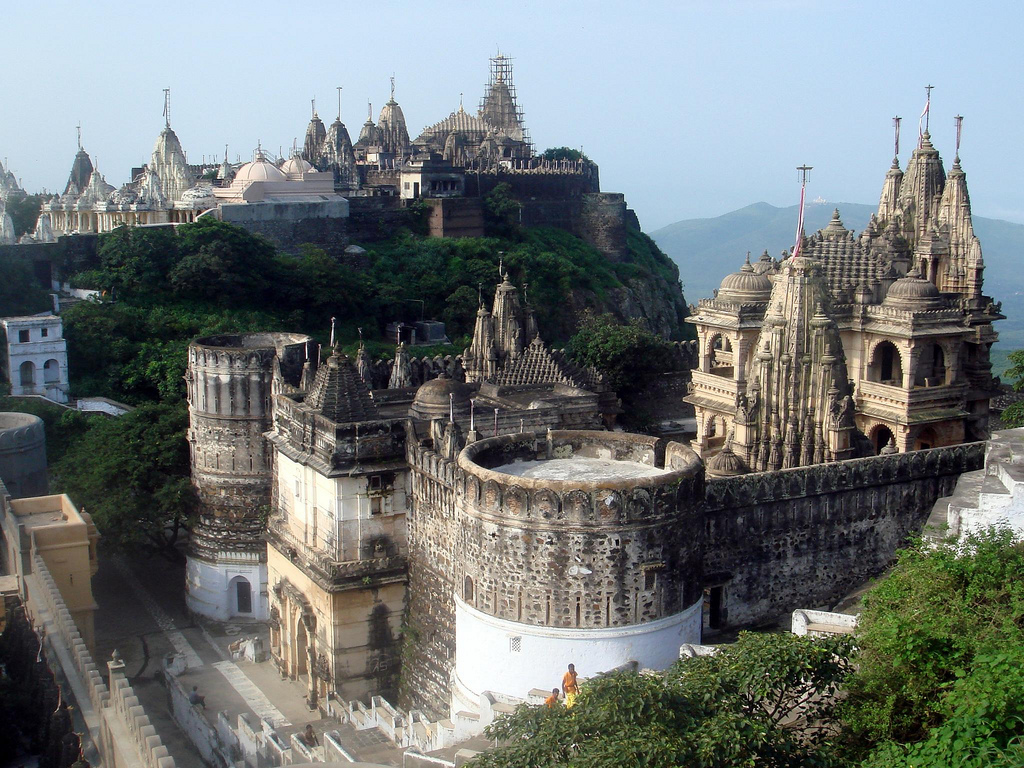
Here, “Muni Bhagwans” (holy saints) are always found in hundreds. Thousands of devotees visit this place on a pilgrimage to benefit themselves on a collective worship and offering of prayers on Kartik Poornima and Chaitra Poornima and on Falgun Sukla 13 and on Vaishakh Sukla 3 (Akshay-tritiya). By doing this they feel themselves fulfilled and attain punya. On the day of Akshay-tritiya, thousands of Jain householders who practice austerities of fasting all the year round from all over the country come here for breaking their fast. Because of these crowds, the sight of the place becomes a great source of inspiration and is very enchanting. Large and small congregations of Jains keep on coming and going every day throughout the year as a result of which the place attains the appearance of a continuous fair. The annual fairs are held on following days:
- on Kartik Poornima.
- on Falgun Sukla 13 (Circulatory pilgrimage of 6 Kos)
- on Chaitra Poornima.
- on Vaishakh Sukla Tritiya (on the occasion of the breaking of fast on the part of those who practiced austerities of fasting all the year round).
- on vaishakh Krishna 6, the anniversary of the 16th renovations carried out on the temple at the instance of minister Karmashah and the consequent ceremonial consecration of the temple (also the anniversary of the ceremonial hoisting of the flag on the sikhar of Dada’s principal temple).
In the town of Palitana there are many other temples right up to the base of Mt. Shatrunjaya; one of them is a temple of Jain Agamas (canonical scriptures). The pilgrims begin their ascent on the Mount after offering their prayers to the foot-prints at its base. First comes the temple with 52 surrounding small single room shrines which is called Dhanvasahi Tunk, ceremonially consecrated on Magh Sukla 10 in Vikram year 1950 and built by Dhanpatsinhji Laxmipatsinhji, a resident of Ajimganj.
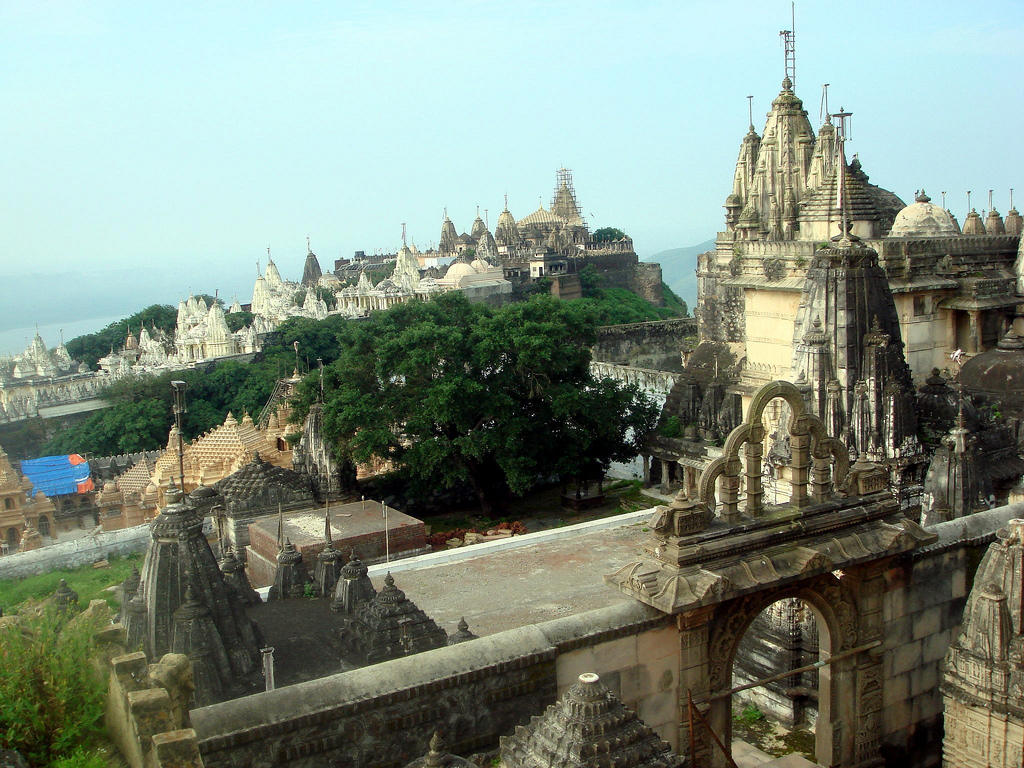
Proceeding further, some single room shrines opposite to various resting places in some of which there are foot-prints of Sri Bharat Chakravarthy, Sri Varadutt, disciple of Sri Neminath Bhagwan, Sri Adishvar Bhagwan and Sri Parshvanath Bhagwan and in some of which there are idols of Sri Dravid, Sri Variknil, Sri Naradji, Sri Ram, Sri Bharat, Sri Thavachchhaputra, Sri Shukparivrajak, Sri Shelaksuri, Sri Jali, Sri Mayali, Sri Uvayali and some goddesses etc. In between is also situated Kumarpal Kund (reservoir), Shala Kund etc. Near Shala Kund there is Jinendra Tunk where some idols and enshrined foot-prints of some Acharyas are installed. Here there is one impressive and beautiful idol of goddess Sri Padmavati (height 40.6 cm). Near Hanumanhada a path is leading to nine tunks and another path is leading towards the principal tunk of Sri Adishvar Bhagwan. On the way to the latter, first comes Ram Pol and then comes Vaghan Pol. Still further, before entering Hathi Pol, there are Suraj Kund, Bhim Kund and Ishvar Kund. There is one large water tank also, water from which is being used for abhishek of the Lord.
The nine tunk are:
- Sheth Narsi Keshavji Tunk built at the instance of Sheth Narsi Keshavji in Vikram year 1921. Principal Deity is Sri Shanthinath Bhagwan.
- Tunk of Choumukhiji (the quadruple idol whose face is seen on all four sides). This is the highest point of the mountain, the top of the sikhar of which is visible from a great distance. It was renovated in Vikram year 1675 at the instance of Sheth Sadasomji. Behind this tunk in the temple of Pandavas, there are idols of five Pandavas, Mother Kunti, and Sati Draupadi. On this point, there is also a temple of Mother Marudevi which is very ancient. The principal idol of the tunk is Sri Adishvar Bhagwan. In the area outside the tunk of Choumukhiji, there is group of four temples which is known as Khartar Vasahi.
- Chhipa Vasahi Tunk, built at the instance of Chhipa brothers in Vikram year 1791. Principal Deity is Sri Adishvar Bhagwan.
- Sakar Vasahi Tunk, built at the instance of Sheth Sakarchandra Premchandra in Vikram year 1893. Principal Deity is Sri Chintamani Parshvanath Bhagwan.
- Nandishvar Tunk, built at the instance of Shethani Ujambai in Vikram year 1893. In the centre of this tunk are installed four idols each facing all the four directions of eternal Jineshvar gods Sri Rishabhanan, Sri Chandranan, Sri Varishen and Sri Vardhaman. The Principal Deity here is Sri Chandranan Jineshvar Dev.
- Hem Vasahi Tunk, built at the instance of Sri Hemabhai a resident of Ahemdabad in Vikram year 1886. Principal Deity is Sri Ajithnath Bhagwan.
- Prem Vasahi Tunk, built at the instance of Modi Sri Premchandraji Lavji in Vikram year 1843. Principal Deity is Adishvar Bhagwan.
- Bala Vasahi Tunk, built at the instance of Sri Balabhai in Vikram year 1893. The principal Deity is Sri Adishvar Bhagwan.
- Motishah Tunk, built at the instance of Sheth Sri Motishah and ceremonially consecrated at the instance of his son Sri Khimchandra in Vikram year 1893. The Principal Deity is Sri Adishvar Bhagwan.
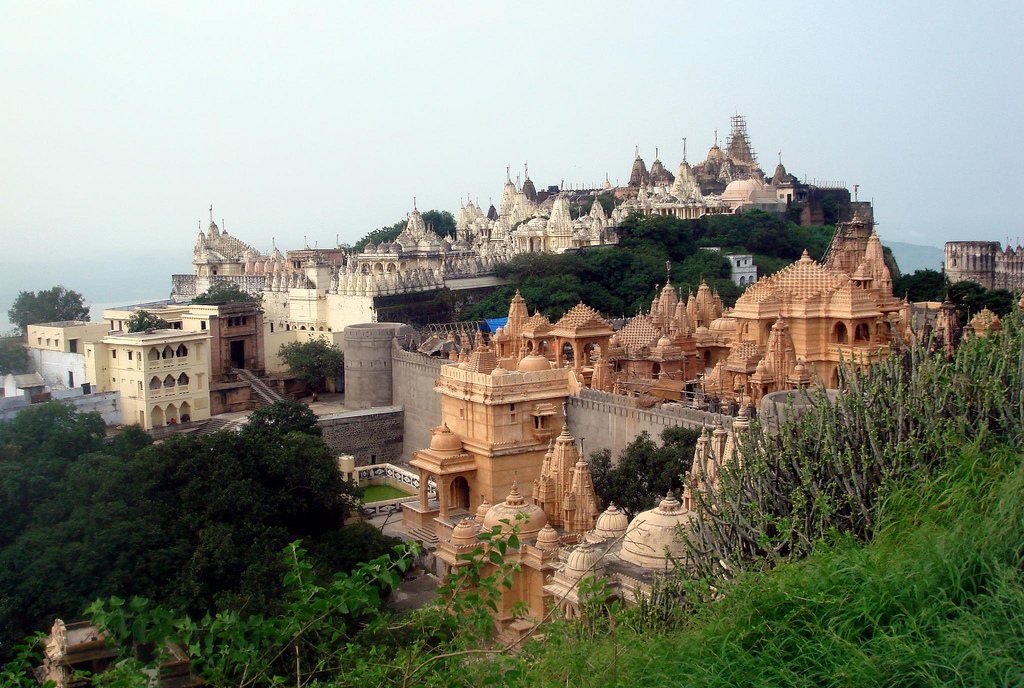
The principal temples on above tunks as well as several other temples together give an appearance of a row of mountains. On the back side of the mountain there is spot called “Gheti ni Pag” where there are old foot-prints of Sri Adishvar Bhagwan and two newly built temples. To reach there, the steps are cut near the principal tunk. To make a pilgrimage here renders one pilgrimage on Mount Shatrunjaya as equal to two pilgrimages. Nearby is flowing the river of Shetrunji which is considered to be very holy.
There are three types of circulatory pilgrimage of Mount Shatrunjaya, one of 1.5 “Kos” (4.8 km), the other of 6 “Kos” (19.3 km) and the third if 12 “Kos” (38.6 km). Those who make 99 pilgrimages and other equally fortunate pilgrims generally complete their circulatory pilgrimage after taking a bath in river Shetrunji and thus destroy their sins. Near Prem Vasani Tunk, there is a large size magnificent idol of Sri Adishvar Bhagwan who is called “Adbhut Baba” (incredible and wonderful). The idol is in a lotus posture and of height 5.5 meters. Behind the temple of the principal tunk, there is an ancient Rayan tree (yellow colored and smaller than date size fruit). It is said that Sri Adishvar Bhagwan had practiced his austerities here.
Impressions of Mount Shatrunjaya and its temples:
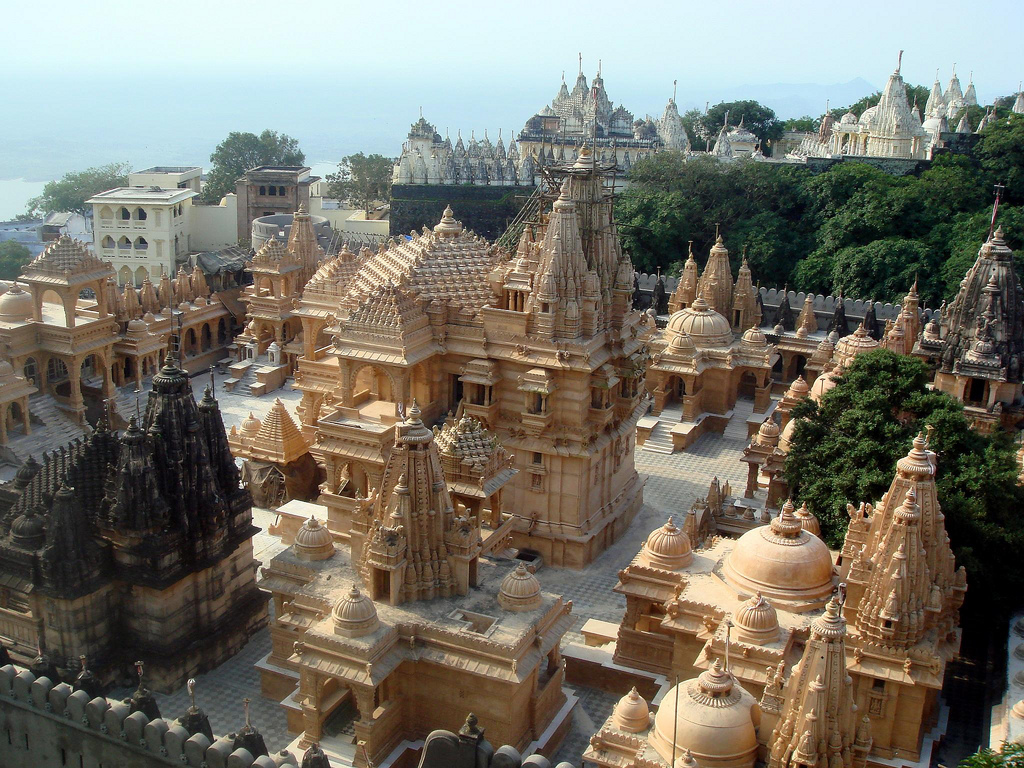
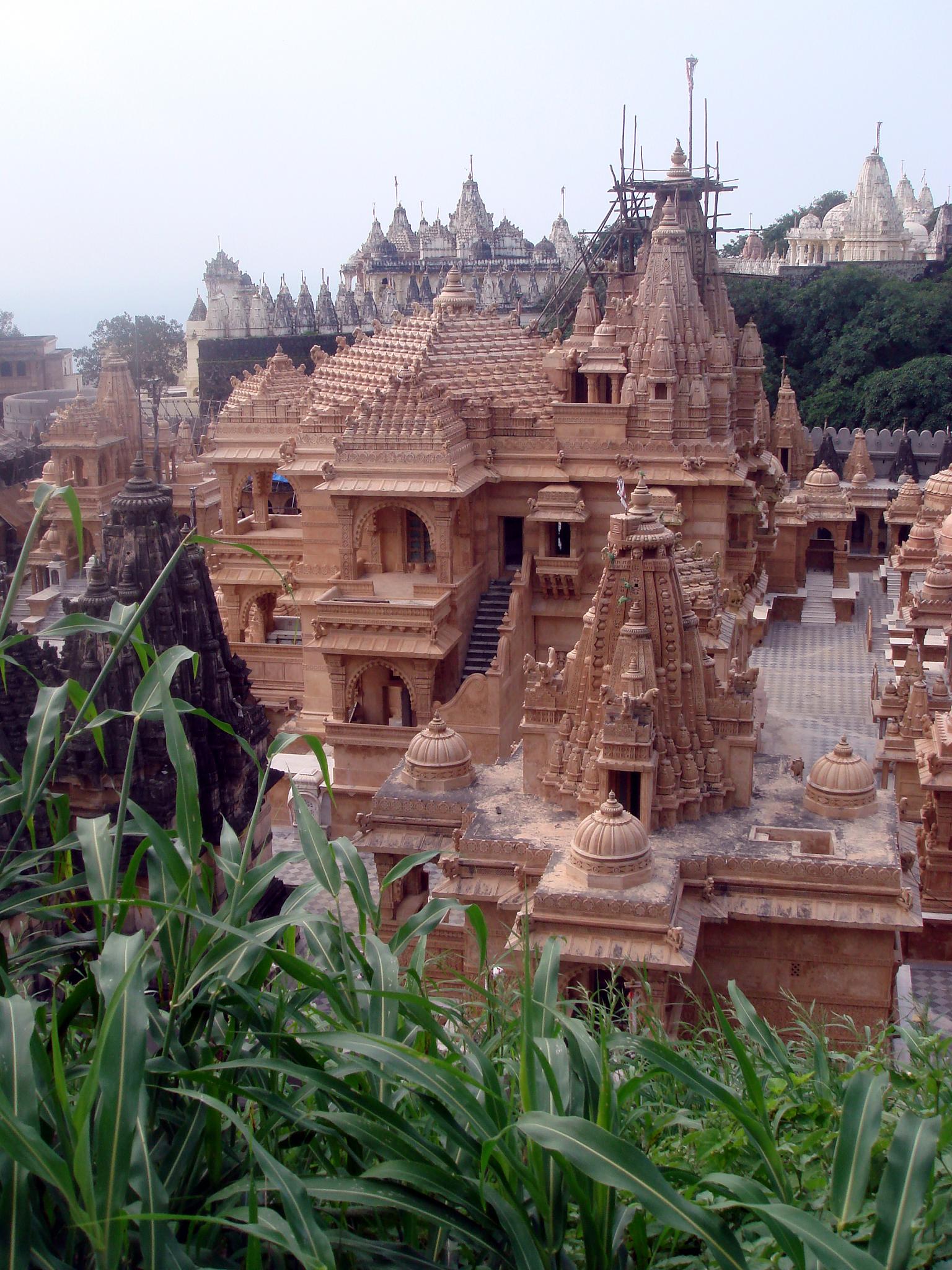
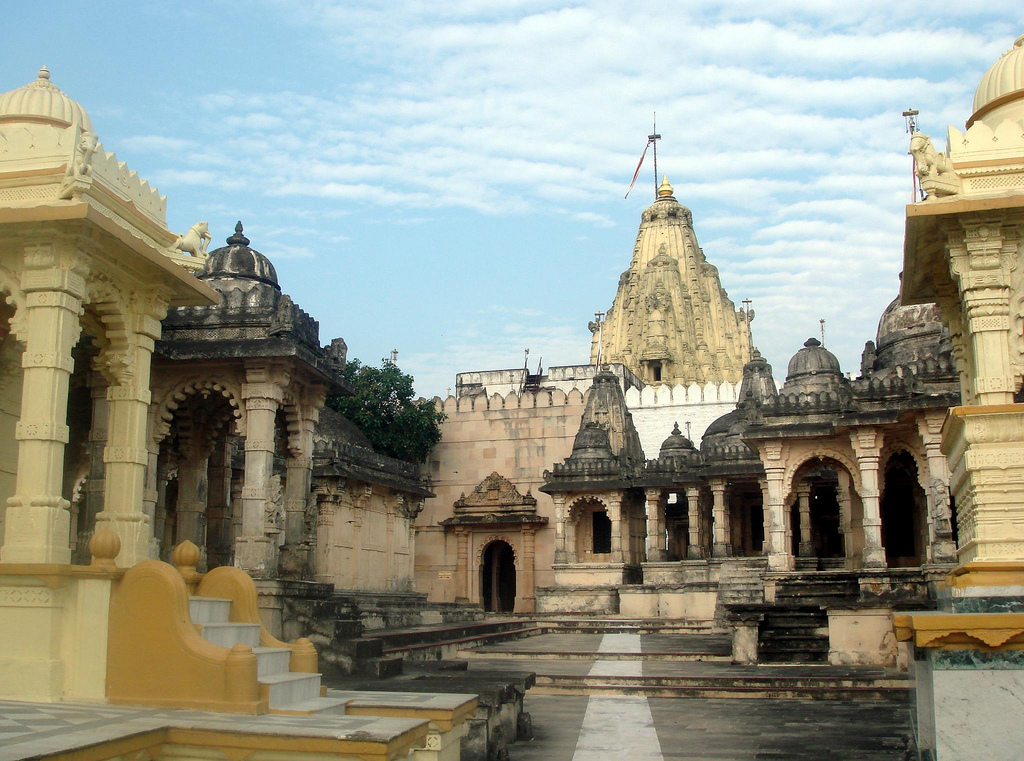
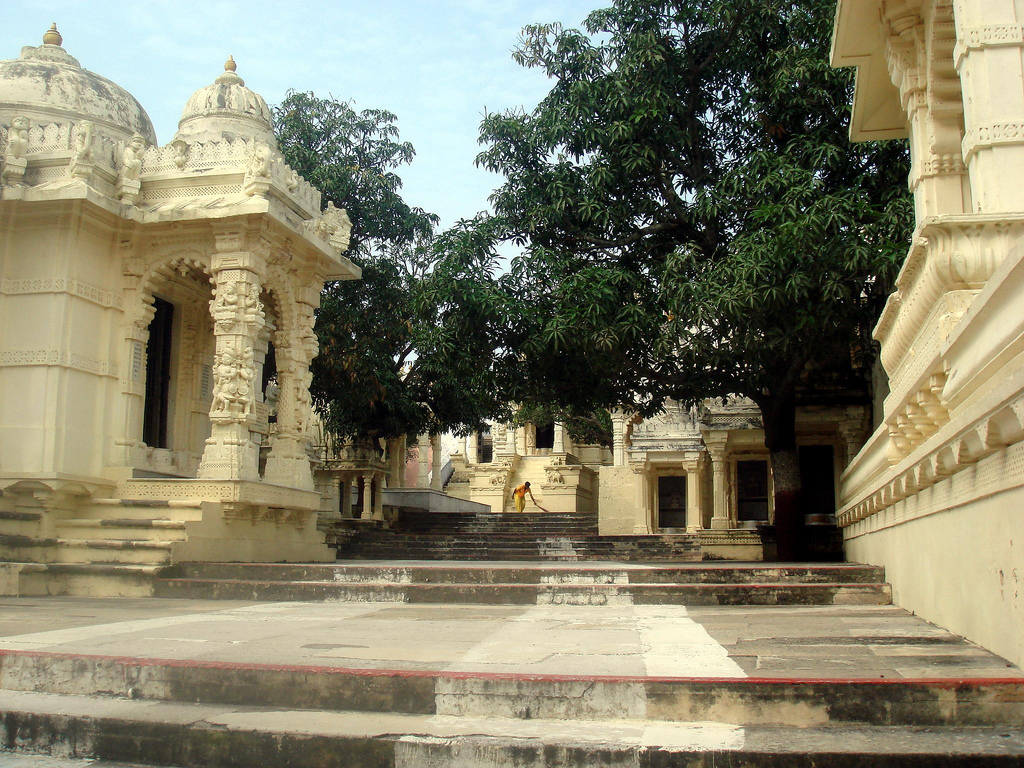
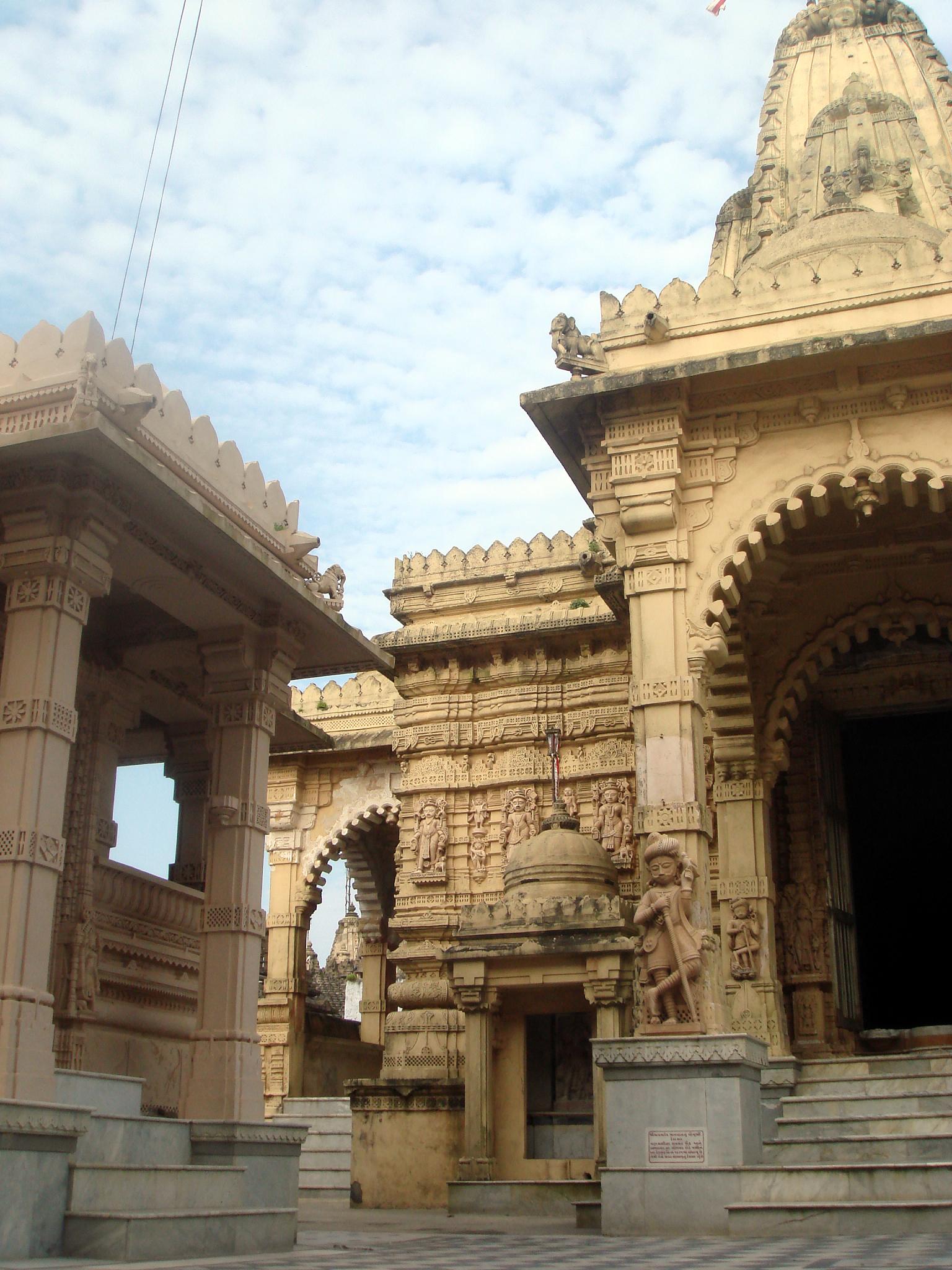
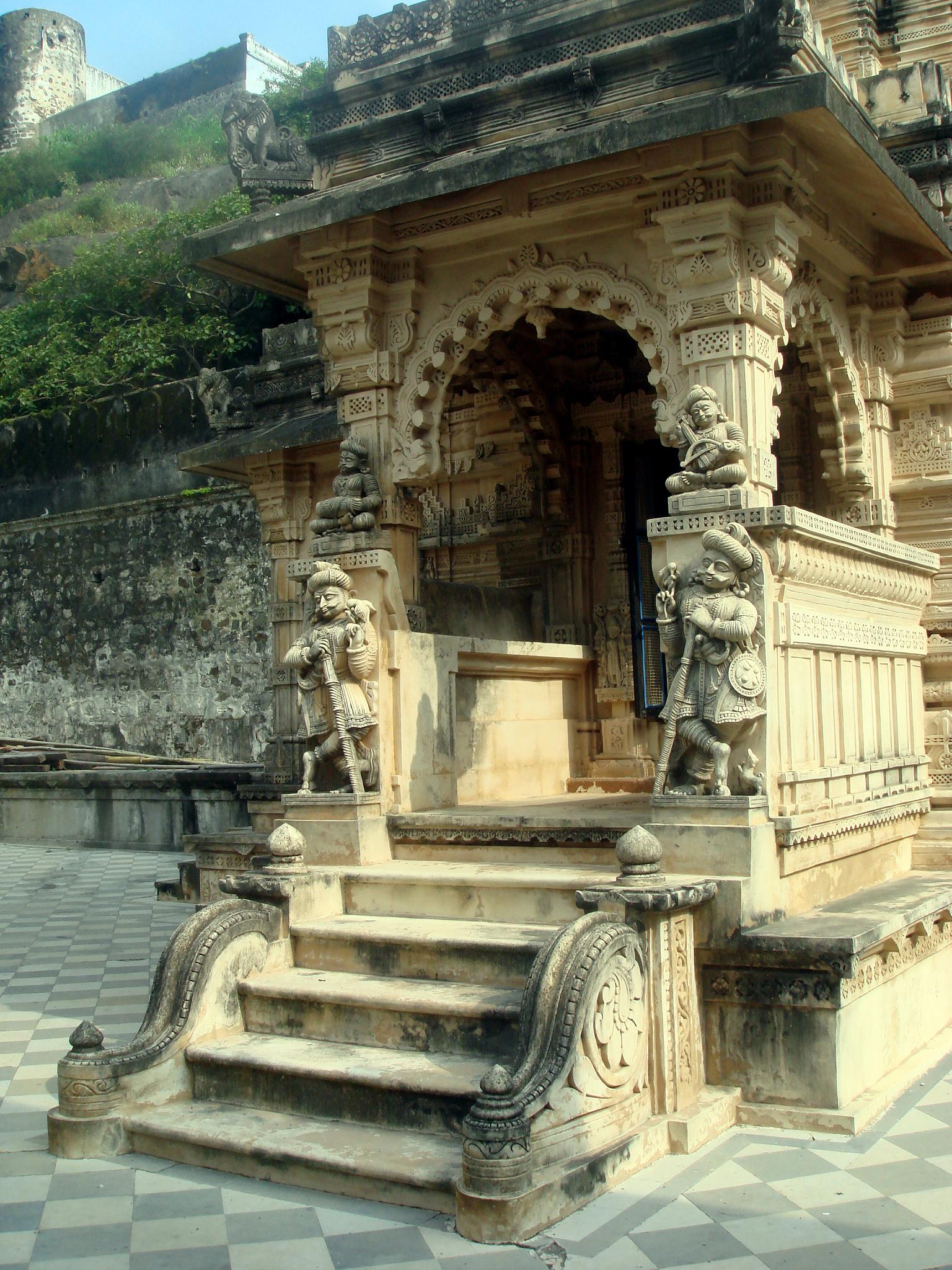
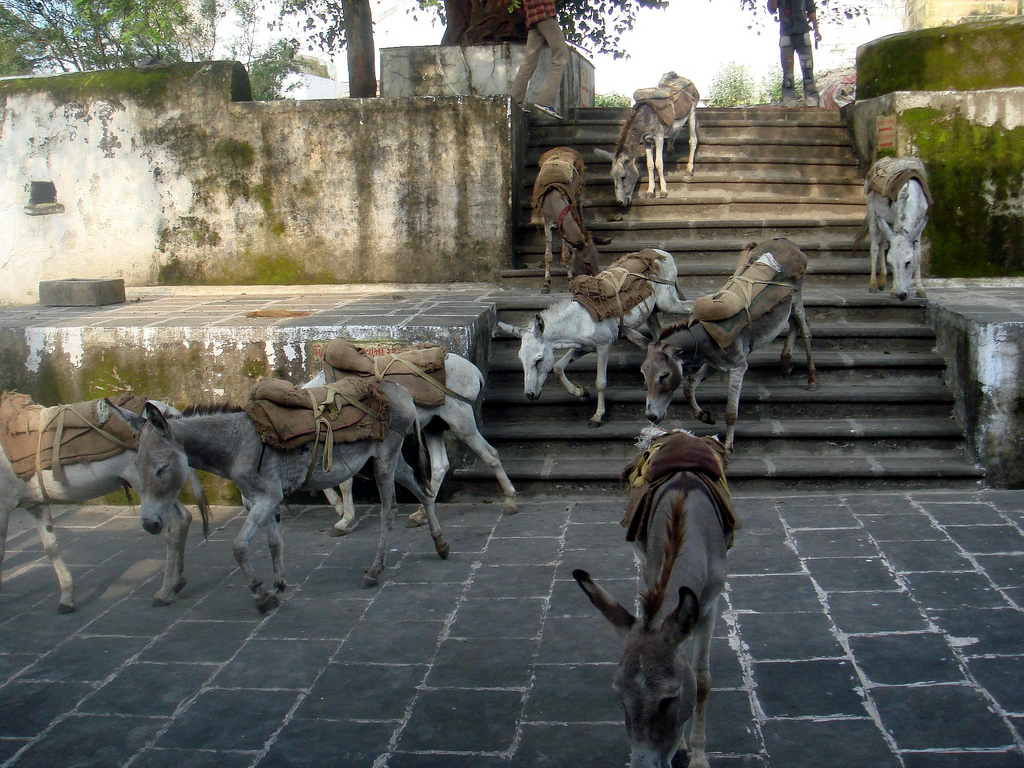
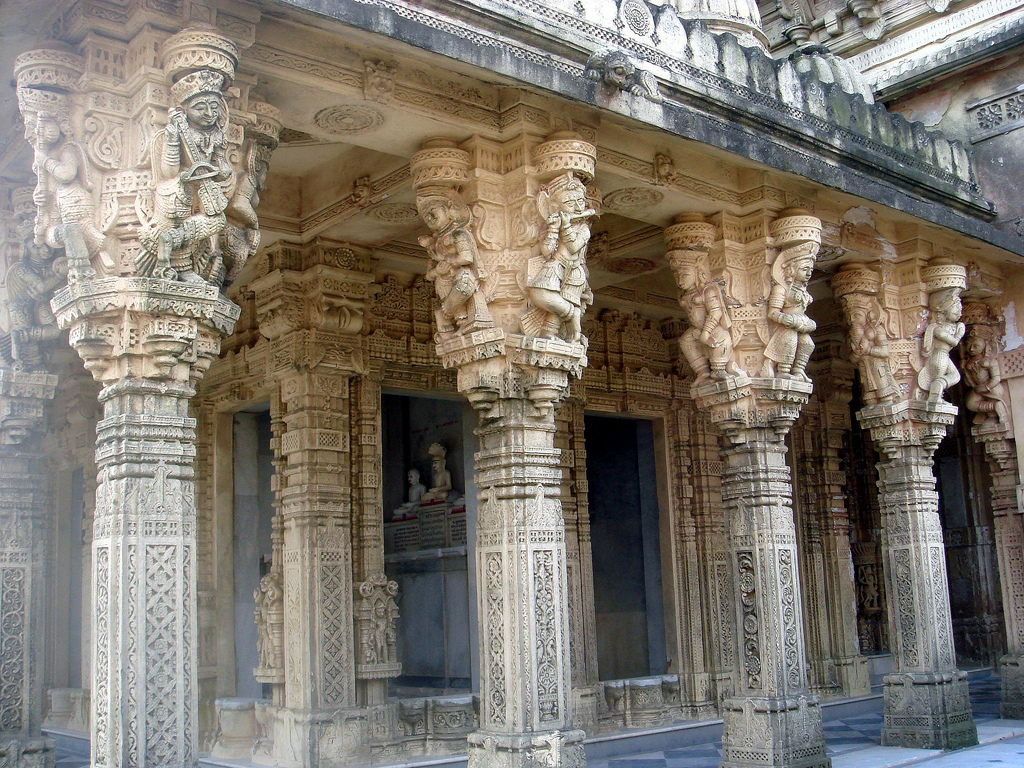
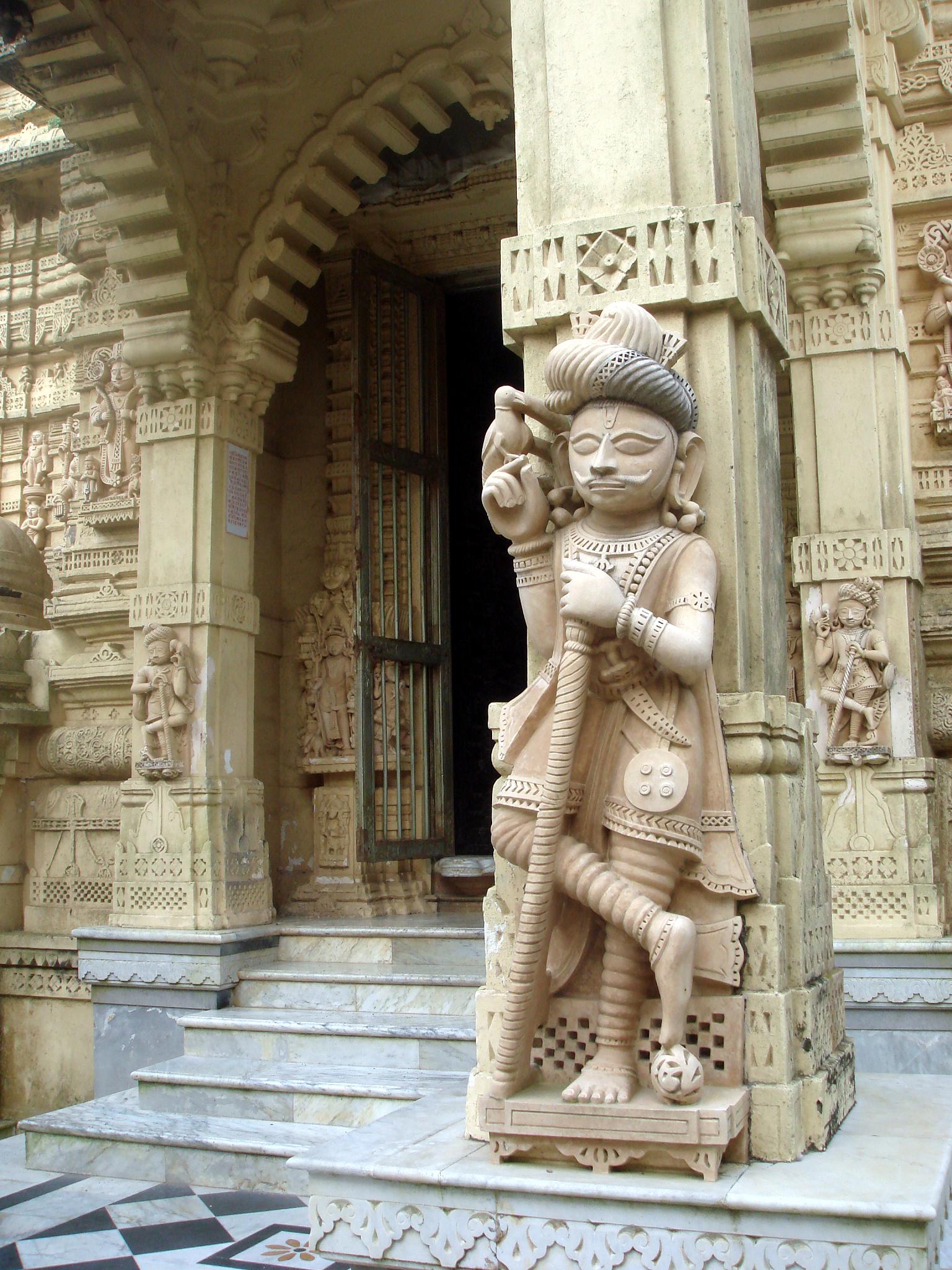
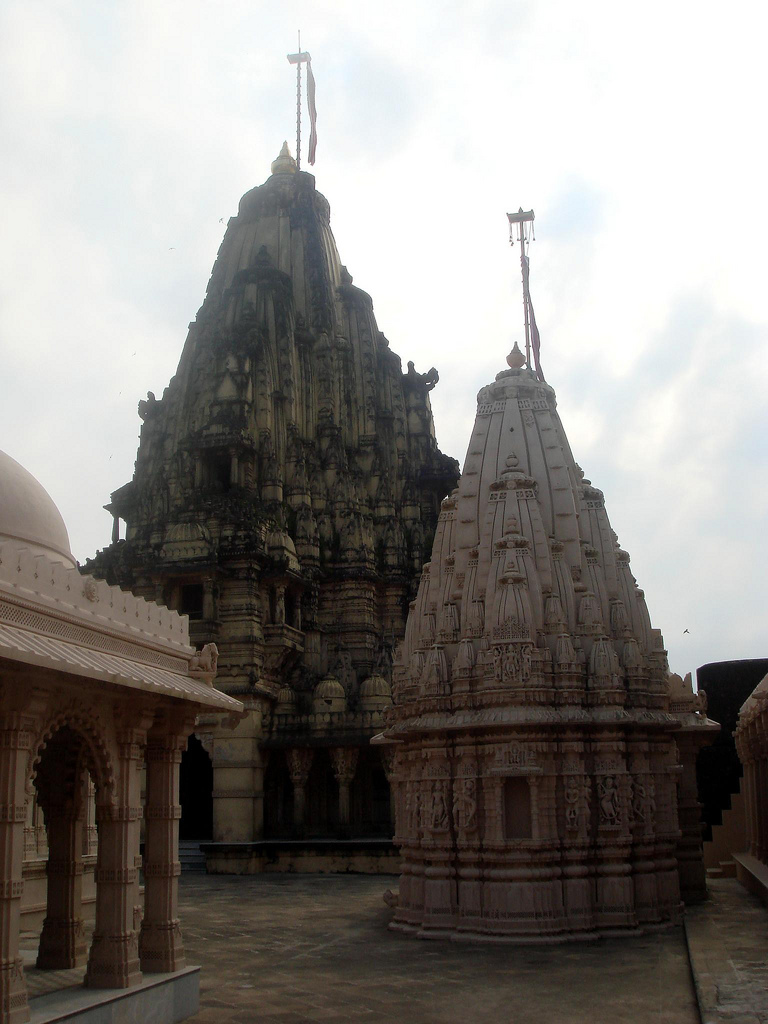
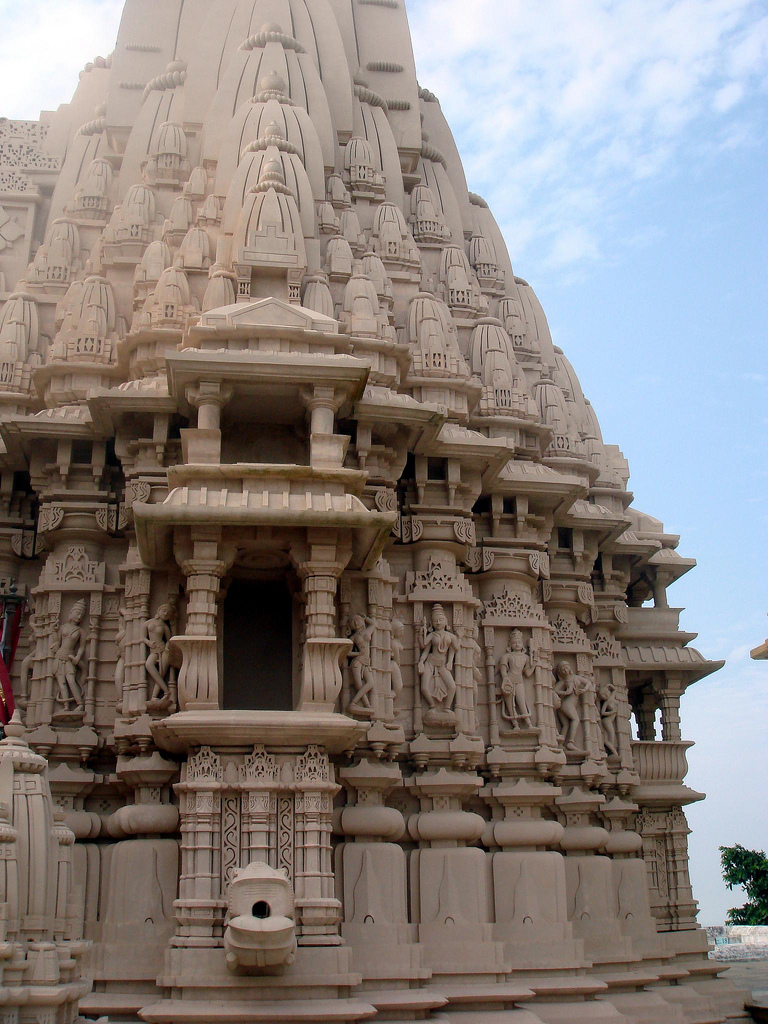
Impressions of Palitana at the foot of Mount Shatrunjaya:
